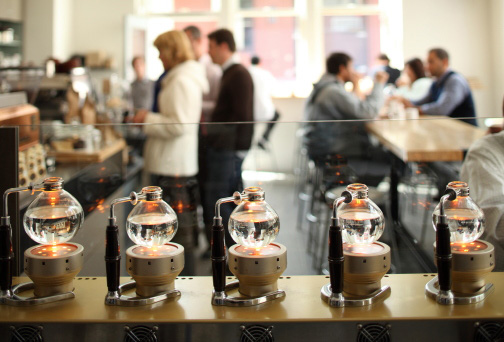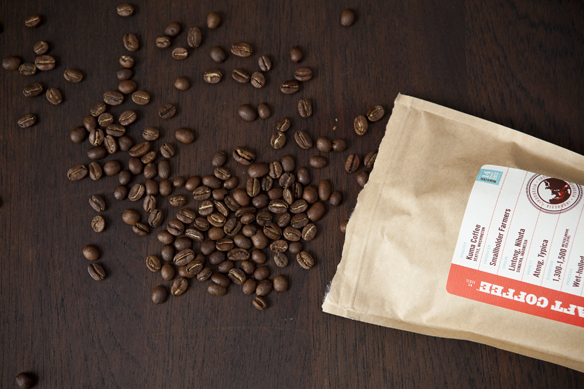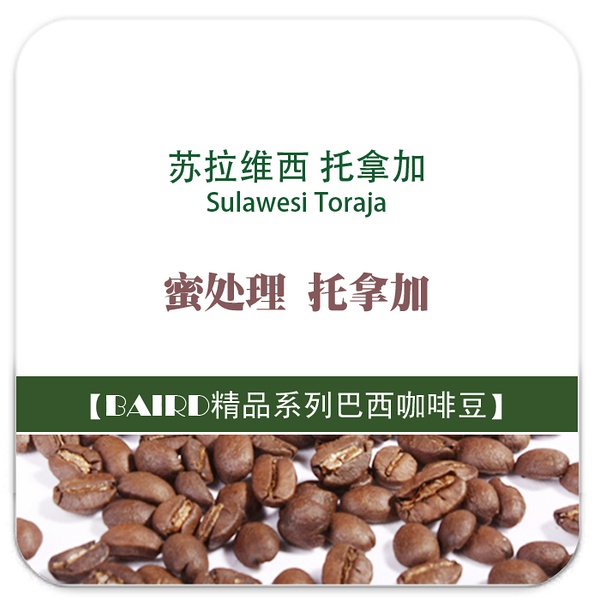The third wave of boutique coffee introduction of the European Fine Coffee Association and the American Fine Coffee Association
Most domestic players experience the second baptism of boutique coffee. Starbucks, Bitz, Knudsen, George Hall, Kenneth Davis, David Schumer, Kevin Knox, Art Coffee, Sweet Maria, Green Mountain Coffee and Fair Trade are common memories.
But after the millennium, the second wave has become old, and the third wave of boutique coffee has become its own style. In order to upgrade, the former second wave operators have introduced the third wave of elements one after another.

The third wave of six evolutionary elements:
1. Attach importance to the flavor of the region
The second wave of coffee people are used to describing coffee flavor in terms of producing countries. however, there are dozens of coffee varieties and different climates and soil and water environments in the same country, so it is not necessary to buy the right varieties and soil and water in the right country. Only the country of origin is used to discuss the general roughness and unprofessionalism of coffee flavor. The third wave uses more specific producing areas, manors, latitudes, elevations, treatments, microclimates and varieties to discuss the tastes of different regions. Attaching importance to the knowledge of coffee varieties and soil and water is the third wave and the first major evolution.
two。 Avoid re-baking and then bake lightly.
In order to show the regional flavor of different soil, water and varieties of each manor, the baking degree of the third wave operator has also been revised from re-baking to shallow baking, medium baking or medium-deep baking, rarely to the second explosion intensive stage, and will come out at most from the second explosion, or even earlier, so as to avoid excessive carbonization and cover up the smell of the region. Therefore, reducing the degree of baking to shallow baking to interpret the bright and lively sour fruit notes of fine beans is the third wave and the second largest evolution.
3. Attach importance to the treatment of low pollution
In order to reduce river pollution, no longer adhere to the better dogma of washing beans with water, and then improve the treatment method that does not require water consumption, so that the methods of sun exposure, semi-washing, honey treatment, and wet planing are very popular, which not only expands the diversity of coffee taste spectrum, but also protects the environment. Sustainable management is the third wave and the third evolution.
4. Filter black coffee has become the mainstream
With espresso as the bottom, Italian coffee such as latte and Cabo with fresh milk and foam is the second wave of main drinks, but the third wave vigorously promotes the original black coffee without sugar and milk, using Japanese, European and American hand brewing and racing style or desktop smart filter cups, which were once regarded as vulgar follicular punches, but they are the most natural extraction method without external interference to let the coffee speak for itself.
5. Direct baking plant of origin
The second wave of vigorously promoted fair trade system is riddled with drawbacks, and coffee farmers are still exploited by middlemen. The third wave of bakers traded directly and went to various producing areas to find good beans, so as to help farmers understand the quality requirements of the boutique market, and then improve the quality, sell them directly to bakers at better prices, and avoid exploitation by middlemen. Increase farmers' income, so as to cultivate the friendship between the two sides, form a positive interaction between the producing area and the consumer country, and the relationship between the roaster and the coffee farmer is closer.
6. Scientific interpretation of Coffee Aesthetics
The second wave of coffee people are used to using subjective rules of thumb to describe the extraction, roasting, cultivation and processing of coffee, but the third wave is supplemented by more accurate scientific research data to explain the coffee industry. the contents of sucrose, organic acids and aromatic components of all coffee varieties are compared with scientific data. The chemical changes in roasting and extraction are also explained by scientific theory, and even the abstract coffee concentration is presented as a specific numerical value. It is the third wave and the sixth evolution to study the upstream, middle and lower reaches of coffee as an aesthetics, and pay attention to the scientific research of seed selection, cultivation, treatment, cup measurement, roasting, extraction, concentration and extraction rate.
Source: Beresta's blog
Important Notice :
前街咖啡 FrontStreet Coffee has moved to new addredd:
FrontStreet Coffee Address: 315,Donghua East Road,GuangZhou
Tel:020 38364473
- Prev

The five key steps of making Coffee Collaborative Learning Coffee steps to make Coffee
1. Storage temperature when your coffee beans need a storeroom, long-term storage will slowly reduce the flavor of coffee beans. But most importantly, do not use cold or frozen methods to store your coffee beans, drastic temperature changes will greatly damage the taste and aroma of coffee beans. two。 Freshly ground a good cup of coffee must use freshly ground coffee powder, because once coffee
- Next

Sulawesi Tonaga Sulawesi Toraja coffee beans Toraja bucket how to soak how to drink?
Sulawesi Sulawesi Toraja: the main producing areas of Indonesian coffee beans are Sumatra, Java and Sulawesi. Sulawesi is one of the largest islands in Indonesia. Sulawesi, the former Dutch colony of Sulawesi, formerly known as Celebes, met the sea by a sailor in 1511.
Related
- What is the meaning of lactic acid fermentation with coffee bean treatment?
- How to judge the state of foam by sound?
- How does the latte pull out the unicorn pattern? Come to get for a little trick to improve the flower pull!
- Will flower pulling affect the taste of the latte?
- Do you know the history of coffee?
- The difference between honey treatment and sun washing what is raisin honey treatment?
- What kind of milk can a novice use to make coffee foam to keep the foam longer? The correct method and skills of milking tutorial sharing
- Why do washed coffee beans taste sour? Flavor characteristics of washed Coffee
- Introduction to the skill of how to practice the size and height of water injection around the circle of hand-brewed coffee
- How do beginners practice coffee flower drawing from scratch?

